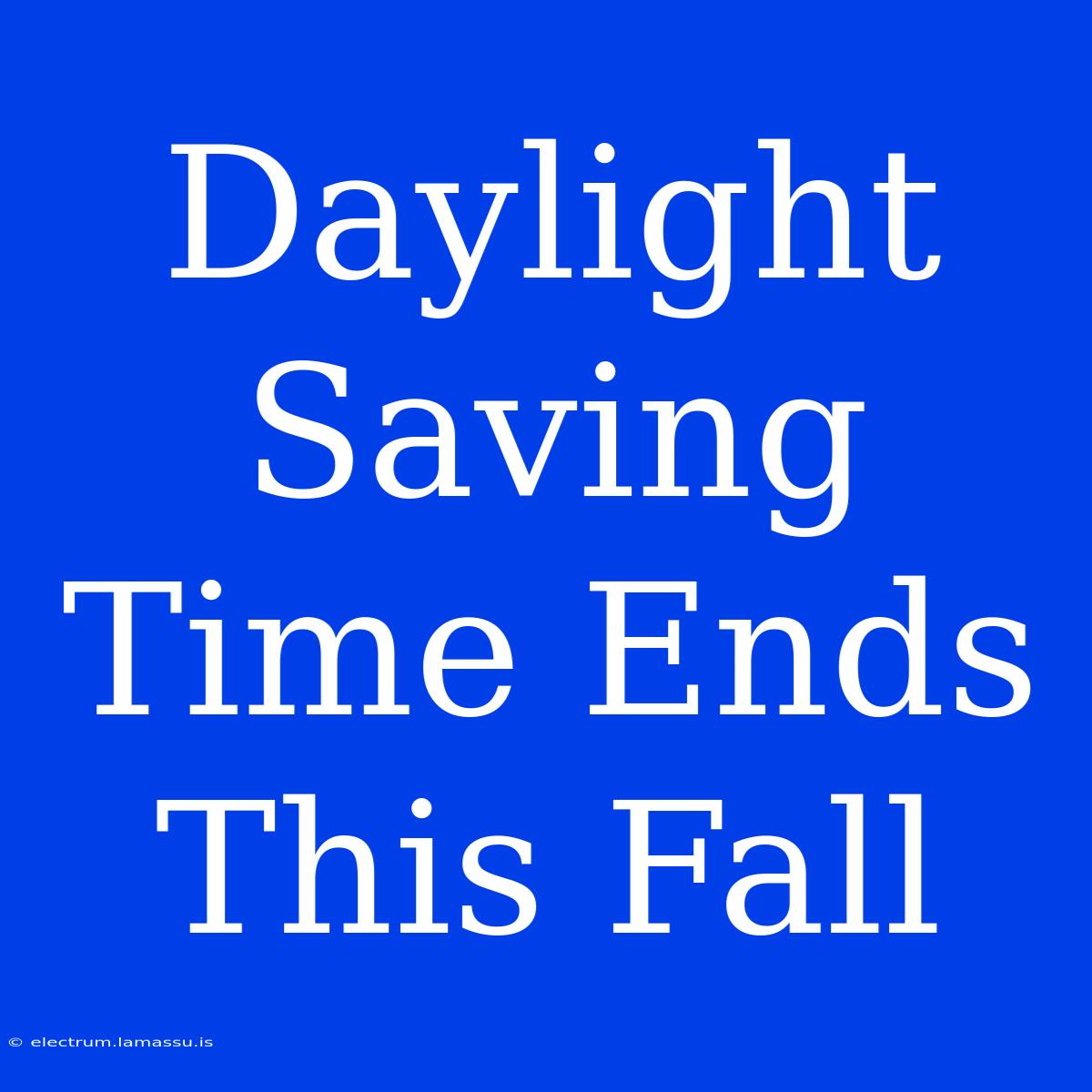Daylight Saving Time Ends This Fall: What You Need to Know
Is Daylight Saving Time ending this fall? While it might feel like it's always on our minds, Daylight Saving Time (DST) does indeed end every year, marking the return to Standard Time. This year, Daylight Saving Time ends on November 5, 2023, at 2:00 AM local time. This means that clocks will be turned back one hour at that time, giving us an extra hour of sleep but also ushering in the shorter days of fall and winter.
Why is this important to understand? DST can significantly impact our daily lives. From work schedules to travel plans, the change in time can disrupt routines and lead to confusion.
This article will delve into the intricacies of Daylight Saving Time, including:
- The history and purpose of DST
- The impact of the time change on our bodies and minds
- Tips for adjusting to the time shift
- FAQs about Daylight Saving Time
Analysis:
To compile this comprehensive guide, we analyzed various resources, including official government websites, scientific studies, and expert opinions. We sought to provide readers with accurate and up-to-date information about Daylight Saving Time, helping them navigate the time change with greater awareness and ease.
Key Takeaways About Daylight Saving Time
| Key Aspect | Details |
|---|---|
| History | Introduced in the US during World War I to conserve energy and daylight. |
| Purpose | To extend daylight hours in the evening, potentially saving energy and boosting the economy. |
| Impact | Disrupts sleep patterns, can lead to mood swings, and increase the risk of accidents. |
| Adjustment | Gradual changes to sleep patterns and exposure to sunlight can help ease the transition. |
Understanding Daylight Saving Time
The History and Purpose of DST
Daylight Saving Time was first introduced in the United States during World War I to conserve energy by shifting the clock forward one hour. It was intended to take advantage of daylight hours, allowing people to utilize natural light for longer periods. This, in theory, would reduce the need for artificial lighting, saving energy.
Impact of the Time Change
The time change associated with DST can have significant impacts on our bodies and minds:
- Disruption of Sleep Patterns: Shifting the clock forward by one hour can disrupt our natural sleep-wake cycles, leading to sleep disturbances and fatigue.
- Mood Swings: Sleep deprivation can contribute to mood swings, irritability, and decreased concentration.
- Increased Risk of Accidents: Studies suggest that the time change can increase the risk of accidents, particularly in the days following the transition.
Adjusting to the Time Shift
While the time change can be disruptive, there are ways to minimize its impact:
- Gradually Adjust Sleep Schedule: Start adjusting your sleep schedule a few days before the time change, going to bed and waking up a little earlier each day.
- Expose Yourself to Sunlight: Spending time outdoors during the day can help regulate your circadian rhythm and promote better sleep.
- Avoid Caffeine and Alcohol Before Bed: These substances can interfere with sleep quality, especially in the days following the time change.
FAQ About Daylight Saving Time
What does "Standard Time" mean? Standard Time refers to the regular, year-round time that a region observes without any adjustments for Daylight Saving Time.
When does Standard Time start? Standard Time begins when Daylight Saving Time ends, usually on the first Sunday of November in the US.
How do I adjust my clocks? When Daylight Saving Time ends, turn your clocks back one hour at 2:00 AM local time.
Why do we still observe Daylight Saving Time? While its energy-saving benefits are debatable, many argue that it boosts the economy by extending daylight hours for businesses and leisure activities.
Is Daylight Saving Time ending for good? While there have been recent efforts to make Daylight Saving Time permanent, the decision remains in the hands of Congress.
Tips for Navigating the Time Change
- Plan Ahead: Be aware of the time change and its potential effects on your schedule and commitments.
- Be Patient: Allow yourself time to adjust to the new time zone.
- Listen to Your Body: If you feel tired or disoriented, take a break and prioritize rest.
Summary of Daylight Saving Time
Daylight Saving Time is a biannual practice that shifts the clock forward by one hour in the spring and backward by one hour in the fall. While its purpose is to conserve energy and extend daylight hours, it can also have negative impacts on sleep patterns, mood, and safety.
Closing Message:
As the fall season approaches, it's important to remember that Daylight Saving Time will soon end. By understanding the history, impact, and adjustments involved in this time change, we can better navigate the transition and minimize its disruption to our daily lives.

